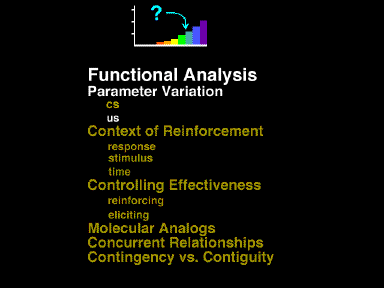 Slide 2-34
Slide 2-34

 Slide 2-34
Slide 2-34
The next manipulation is, of course, the magnitude of the reinforcer. Does reinforcer magnitude affect the degree to which responding occurs to the antecedent stimuli? It's possible that very strong reinforcers generate responding to very early stimuli, while small reinforcers maintain responding to only the final stimulus.
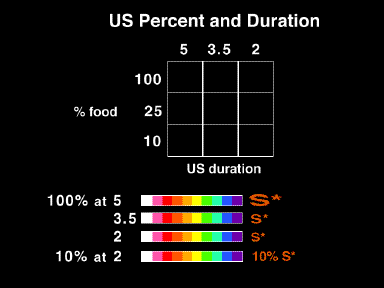 Slide 2-35
Slide 2-35
This is a factorial design which manipulated the magnitude of the reinforcer in two ways. Both the probability of reinforcement and the duration of that presentation were systematically manipulated. The magnitude was varied from 5 seconds of food 100% of the time, to 2 seconds of food only 10% of the time.
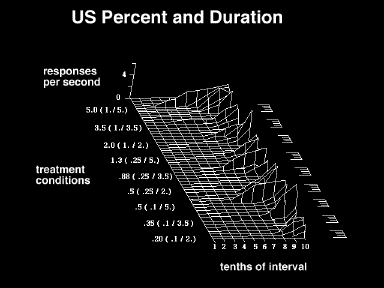 Slide 2-36
Slide 2-36
This figure positions the treatments in order of "total reinforcement magnitude." (100% 5sec largest - 10% 2sec smallest) The obtained results show that while there was some bird-to-bird variability, variations in the magnitude of food did not cause a notable change in the number of stimuli which controlled responding or the duration of responding
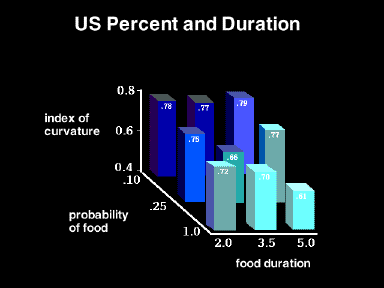 Slide 2-37
Slide 2-37
This slide illustrates the index of curvature or the degree to which the responding was positively accelerated or negatively accelerated.
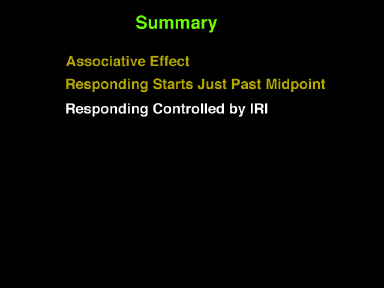 Slide 2-37a
Slide 2-37a
As a result, we can add to our summary that responding is controlled by the interreinforcement interval rather than by the magnitude of the reinforcer
Full text and figures of a journal article on this topic is available at:
***** SERIAL CONDITIONING AS A FUNCTION OF PARAMETRIC VARIATIONS
OF AN INTERFOOD CLOCK
Date Last Reviewed : May 26, 2003